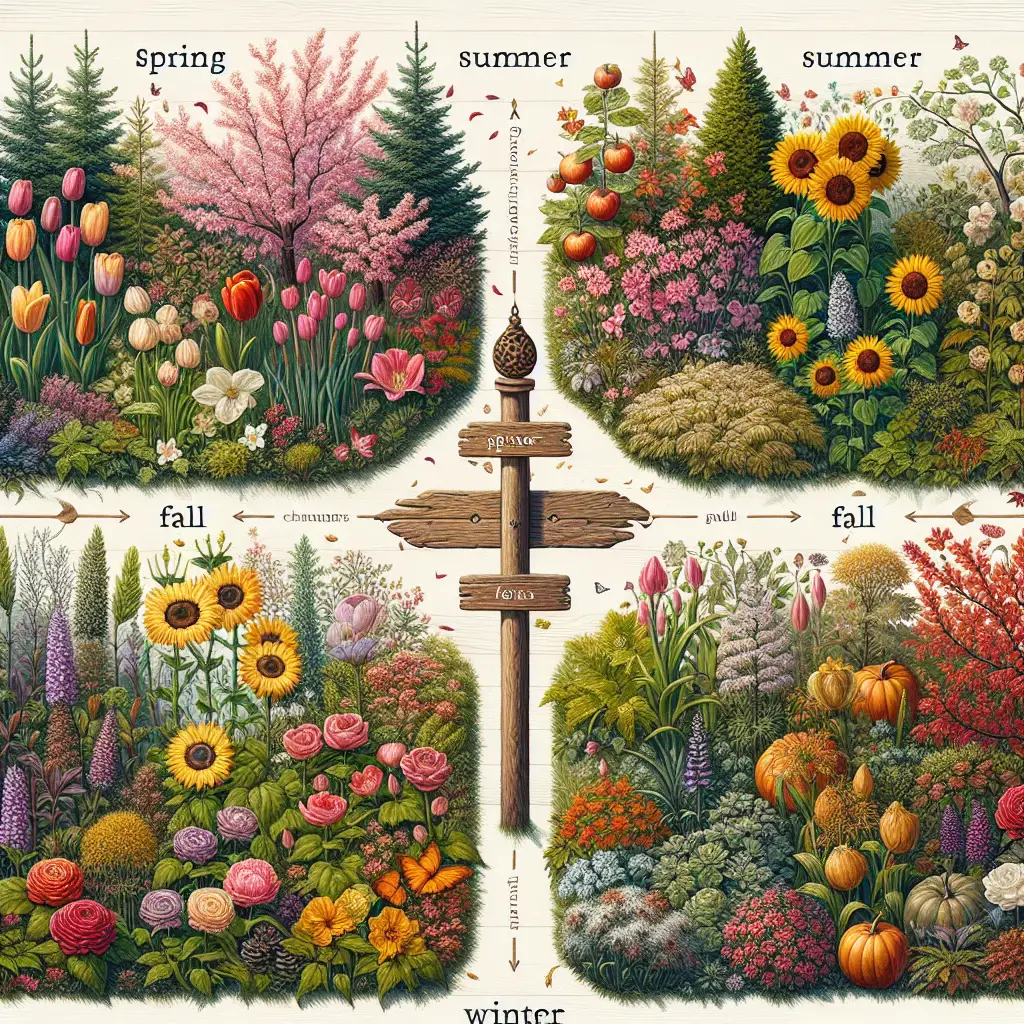The Ideal Planting Seasons for Your Garden: Unlocking Nature’s Calendar
When it comes to harnessing the potential of your garden, timing is not just a factor—it’s the maestro. Understanding the ideal planting seasons is crucial to yield a bountiful harvest and maintain the aesthetic allure of your backyard oasis. Let’s delve into the rhythmic cycles of nature to ensure your garden thrives.
Why Planting Seasons Matter
Plants are attuned to the symphony of the seasons, and each species has its own crescendo period—the perfect time to plant. Ignoring these natural cues can lead to poor germination, stunted growth, and disappointing blooms. A study conducted by the University of Maryland asserts that respecting planting calendars can significantly enhance crop yield and quality.
Spring into Action
Historically known as a time of renewal, spring offers the ideal conditions for many plants to take root. As the soil thaws and the days grow longer, your garden becomes a blank canvas ready for the artistry of gardening.
###Vegetables:
Cool-season veggies such as spinach, lettuce, and peas can be planted as soon as the ground can be worked. For a comprehensive list and optimal planting times, the Old Farmer’s Almanac provides a customizable planting calendar based on your local frost dates.
###Flowers:
Early spring is when you want to sow the seeds of perennials and annuals. Pansies, for example, can tolerate a chill and are ideal to plant in early spring.
###Trees and Shrubs:
This season is the perfect time to plant trees and shrubs as it gives them enough time to establish roots before the summer heat.
Remember to consider your USDA Hardiness Zone to dial-in when to start your planting.
Sultry Summers
Summer can be tricky. The intense heat and vacation plans might dissuade some gardeners from planting. However, continue with:
###Vegetables:
Heat-loving vegetables like tomatoes, peppers, and cucumbers should be planted once the threat of frost has passed and the soil has warmed—a process essential for germination and growth.
###Flowers:
Midsummer is ideal for planting autumn-blooming flowers, such as sunflowers and dahlias. They’ll provide a late-season burst of color to your garden.
Autumn: The Second Spring
With cooler temperatures and moisture, fall is often referred to as the second spring. Planting in autumn can ensure a lovely spring display while starting a vegetable garden could extend your crops’ yield well past the long days of summer.
###Vegetables:
Many vegetables, like kale and Brussels sprouts, prefer the cool fall weather. They need to be planted in late summer or early autumn to ensure they mature before the winter frosts.
###Bulbs:
Autumn is famous for bulb planting. Plant your tulip, daffodil, and allium bulbs now for a vibrant spring bloom.
Winter’s Rest
For the avid gardener, winter is not simply a hiatus but a planning period. This is the time for:
###Indoor Planting:
Starting seeds indoors to get a head start on the spring planting season. Try using a seed starting kit to begin your tomatoes, peppers, or other warm-season plants.
###Reflection:
Peruse garden catalogs or websites for inspiration and to plan for the upcoming seasons.
###Maintenance:
Caring for winter-hardy plants and protecting them from the cold with mulches or covers.
Know Your Zone
Understanding your USDA Hardiness Zone is paramount in scheduling your planting. Resources like the USDA’s Plant Hardiness Zone Map can pinpoint your specific zone, unquestionably an invaluable tool for gardeners.
Gardening Apps and Tools
Leverage technology to assist your endeavor. Gardening apps like Garden Plan Pro or the aforementioned Old Farmer’s Almanac tool can help in tracking the best planting times and managing your garden layout.
Local Expertise
Connecting with local gardening clubs or extension services can also offer personalized advice for your region and climate. Your local Cooperative Extension can provide you with plenty of tailored information.
Conclusion
Gardening is an art and science, and the timing of planting is a keystone for success. Whether you’re a seasoned green thumb or a budding enthusiast, understanding and utilizing the ideal planting seasons in your gardening plan is essential. So, consult your planting calendar, greet each season with the seeds of tomorrow in hand, and watch as your garden comes alive with the splendor of nature’s own design. Remember, with every plant’s natural rhythm uncovered, your garden’s symphony will play on year after beautiful year.


